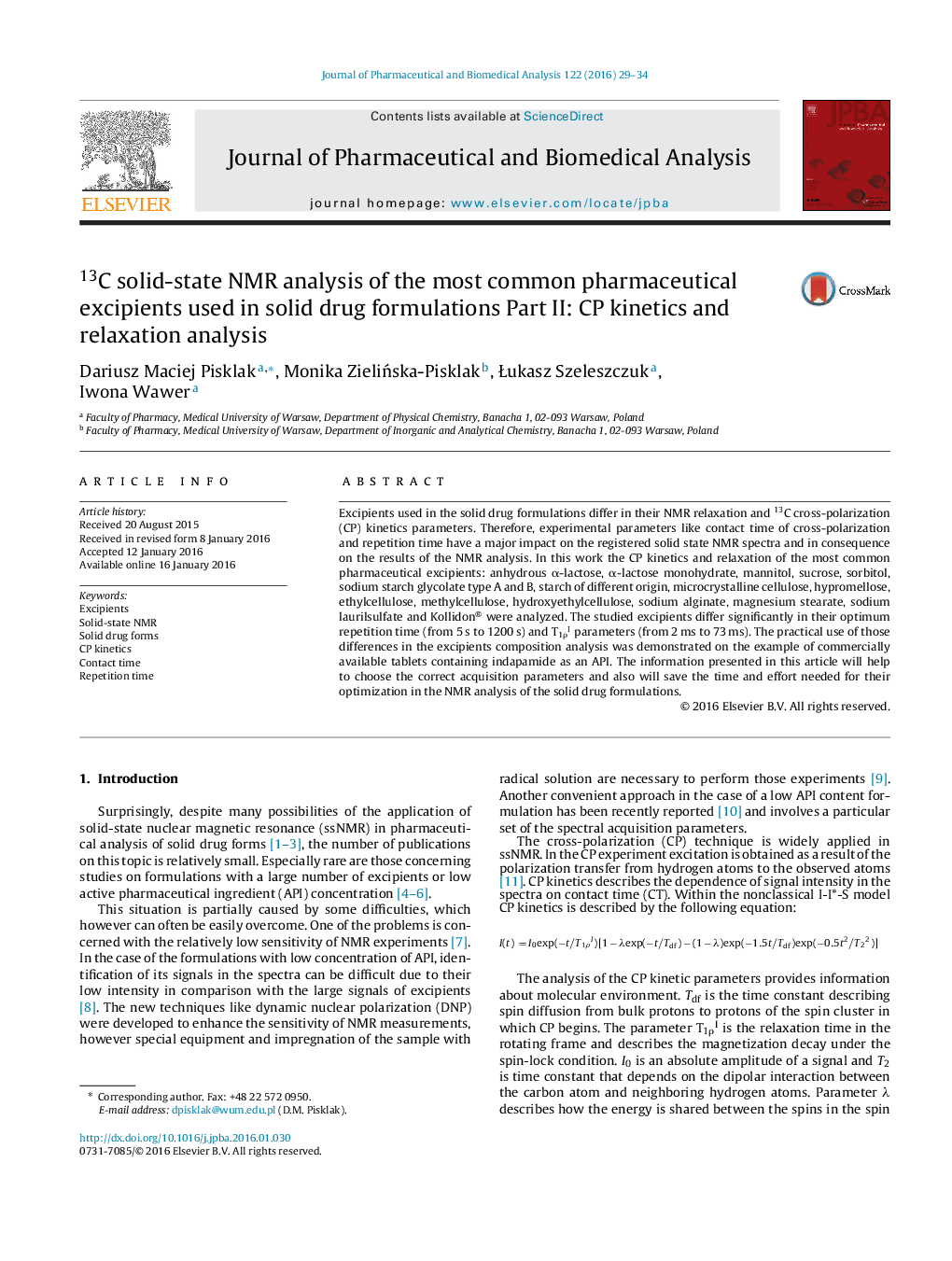| کد مقاله | کد نشریه | سال انتشار | مقاله انگلیسی | نسخه تمام متن |
|---|---|---|---|---|
| 1220410 | 1494613 | 2016 | 6 صفحه PDF | دانلود رایگان |

• Excipients differ significantly in their 13C NMR CP kinetics and relaxation parameters.
• Collected data and information help in the NMR analysis of the solid dosage forms.
• Practical use of those differences is demonstrated on the tablets containing indapamide.
Excipients used in the solid drug formulations differ in their NMR relaxation and 13C cross-polarization (CP) kinetics parameters. Therefore, experimental parameters like contact time of cross-polarization and repetition time have a major impact on the registered solid state NMR spectra and in consequence on the results of the NMR analysis. In this work the CP kinetics and relaxation of the most common pharmaceutical excipients: anhydrous α-lactose, α-lactose monohydrate, mannitol, sucrose, sorbitol, sodium starch glycolate type A and B, starch of different origin, microcrystalline cellulose, hypromellose, ethylcellulose, methylcellulose, hydroxyethylcellulose, sodium alginate, magnesium stearate, sodium laurilsulfate and Kollidon® were analyzed. The studied excipients differ significantly in their optimum repetition time (from 5 s to 1200 s) and T1ρI parameters (from 2 ms to 73 ms). The practical use of those differences in the excipients composition analysis was demonstrated on the example of commercially available tablets containing indapamide as an API. The information presented in this article will help to choose the correct acquisition parameters and also will save the time and effort needed for their optimization in the NMR analysis of the solid drug formulations.
Figure optionsDownload as PowerPoint slide
Journal: Journal of Pharmaceutical and Biomedical Analysis - Volume 122, 15 April 2016, Pages 29–34